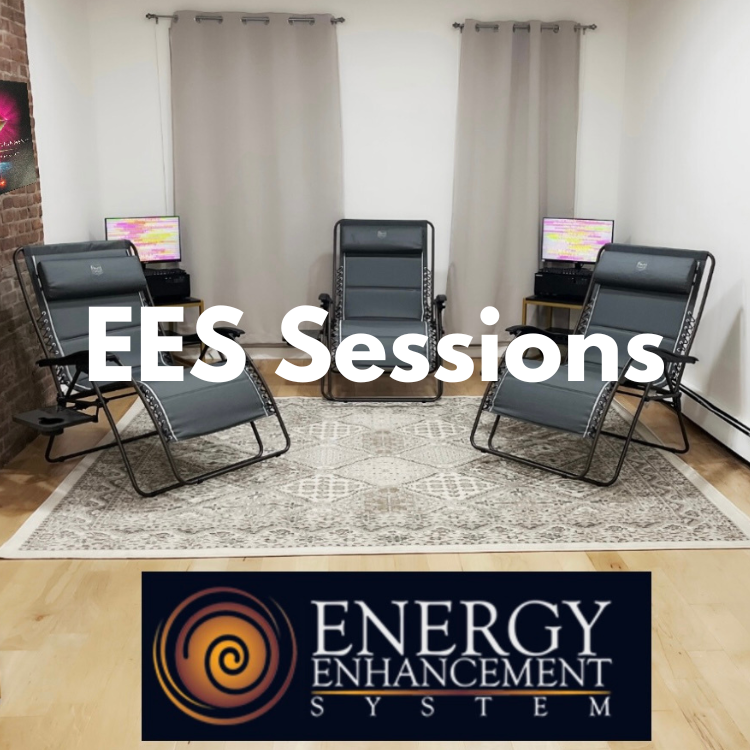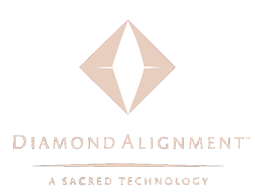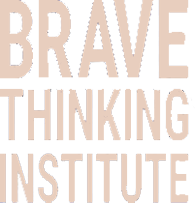If you ever tried to learn a new language, you may recall your first efforts to communicate when using it. Even if you knew the meaning of the words, the native speaker either talked too fast or used a few words that were unfamiliar.
Picture by Fixabay.com
Unfortunately, this is often what is happening even when both people are speaking the same language. The inherent difficulty in any communication lies in the “pace” or speed with which the message is taken in, and the method or “process” of how we understand it. Over time we can learn how to communicate with most people, but when we first meet someone, how can we know their “pace” and “process”?
Face reading provides an immediate answer to this question. Face reading can let us identify the “pace” of people who need more time to carefully take in the information and those that get it almost immediately but need visual input. Furthermore, face reading can also reveal how the other person processes that information by identifying those who need more time before making the decision and those with an almost immediate response. This article will discuss several feature combinations that may aid you in making faster and better connections with people even in your initial meeting.
The “Pace” of Large, Low Ears
An individual’s “pace” or speed of taking in information, is found in their ears which are our natural antennae. Large, low ears (the bottom of the ear hangs lower than where the nose attaches to the upper lip) make excellent antennae and they are good listeners. Large low ears indicate a left-brain dominance in the person’s “pace” or uptake of information. They listen carefully to the words and evaluate and analyze what is being said. They are “thinking” about what they have heard and mentally putting the information in the correct category.
To make a connection with these people be sure that what you are saying is accurate, don’t rush their uptake, and if you are discussing something that is not already familiar to them, try to tie it to something that is in their realm of experience. For example, if you were explaining face reading, start by explaining that we all read expressions and can tell the difference between an expression of delight and one of disgust. Face reading just takes this to the next level by identifying the features that we unconsciously respond to when we instantly have a reaction to someone.
The “Process” of Large, Low Ears with HIGH EYEBROWS

The “process” is how we understand what was said and can be found by reading the eyebrows. Eyebrows reveal our “affect” and are our emotional signalers. A person with large, low ears and high eyebrows, has a left brain “pace” but a right-brain “process” characterized by the need that the final decision must also “feel” right. Having this emotional check on their initial evaluation makes them excellent strategist but don’t rush them. They need lots of time to both take in the information and time to process it.
The “Process” of Large, Low Ears with LOW EYEBROWS

If the person with large, low ears also has low eyebrows (there is little or no space between the top of the eye and the bottom of the eyebrows) they have a left-brain dominance in their processing. A person with this combination wants to respond quickly and they have a “do-it-now” approach. However, their large, low ears indicate that they also want to be right. We could characterize these people as those who want it both “faster and better”.
In communicating with these folks, don’t cut any corners and be sure that what you are telling them is correct. Remember they are often pushing themselves to meet their internal agenda. Your reassurance in voicing your desire to be both quick and accurate in meeting their needs can relieve some of their internal stress. It is always much easier to relate to someone whom we feel is on the same page with us and who can validate our standards.
The “Pace” of Small, High Ears
On the other hand, people who have small, high ears do not have high-quality antennae for listening. In fact, they listen more with their eyes than their ears. The right-brain dominance of this feature reveals that these people are visual listeners. Their “pace” (speed of taking in information) is almost immediate since they are responding to what they see. They might say things like, “show me what you mean” or “I see what you are saying”. It is important to remember that in true right-brain fashion, they are using their ears to listen to your “tone” to identify feelings. They are listening to how you feel about what you are saying almost as much as to the meaning of the words being spoken.
To connect with these individuals, it is important to be visual and to show them what you are talking about. In fact, if you talk without interruption for three or four minutes without giving them a chance to respond or participate and without showing them something visual, you will often lose their attention. Your “tone” is also important as they will hear your disinterest, lack of sincerity, or if you are giving a robotic, stock answer to their question.
“Process” of Small, High Ears with HIGH EYEBROWS

If the person with the small, high ears also has high eyebrows, they “process” from a right-brain perspective. Their decision must feel right, but this takes time. They have taken in the totality of the experience almost immediately, but, it can sometimes feel like sensory overwhelm to sort out what “feels” right. Their “process” is to synthesize the experience to understand it and confirm their true feelings before giving the answer.
The best approach is to give the person with the small, high ears and high eyebrows as much time as they need. If you ask them a question, let them know that you are not expecting an immediate answer. Assure them with, “Take your time, there is no rush”. Once again, the person is put at ease when you respect their individual “pace” and “process” requirements. Realize that they don’t need more data or more explanations. They just need more time to unpack what they have taken in.
The “Process” of Small, High Ears with LOW EYEBROWS

Finally, the person who has small high ears and low eyebrows represents another unique “pace” and “process” combination. They are taking in the entire experience almost instantly, but they are also processing almost as fast. (The left-brain dominance of low eyebrows allows for quick retrieval from known categories.) In fact, they often feel that they know what you are going to say before you have even finished speaking.
The best approach to take with these folks is to not waste any time giving long or careful explanations. Give them the big picture, let them respond and fill in the details as you go or as they ask questions. If possible show them an example or a visual demonstration. Don’t be surprised if they seem to be interrupting you. These people are often having two or three thoughts for everyone they hear, and they often feel that if they don’t express it immediately, they will forget it. Their “pace” and “process” challenge is that more new thoughts are constantly crowding in.
In conclusion, there are four distinct styles of “pace and process”. Not every person will neatly fit into one of these categories but with a little practice, you will discover that many people can be easily identified as belonging to one of the four groups. By respecting their “pace”, the speed with which they take information in, and their “process” or method for understanding and evaluating what they received, you can make instant and deeper connections without having to know the person for an extended time.
 About the author: Mac Fulfer is an attorney who initially became interested in face reading for the purpose of jury selection. After years of practice and study, he wrote Amazing Face Reading, a guide to reading faces. Mac’s use of face reading has provided an amazing breakthrough in communication. He has presented over 1500 talks on face reading to Fortune 500 companies, the American Bar Association, meeting planners, doctors, psychologists, teachers, the military, social workers, auditors, human resource professionals, and realtors to name just a few.
About the author: Mac Fulfer is an attorney who initially became interested in face reading for the purpose of jury selection. After years of practice and study, he wrote Amazing Face Reading, a guide to reading faces. Mac’s use of face reading has provided an amazing breakthrough in communication. He has presented over 1500 talks on face reading to Fortune 500 companies, the American Bar Association, meeting planners, doctors, psychologists, teachers, the military, social workers, auditors, human resource professionals, and realtors to name just a few.
Learn more at http://www.amazingfacereading.com/.
 The “process” is how we understand what was said and can be found by reading the eyebrows. Eyebrows reveal our “affect” and are our emotional signalers. A person with large, low ears and high eyebrows, has a left brain “pace” but a right-brain “process” characterized by the need that the final decision must also “feel” right. Having this emotional check on their initial evaluation makes them excellent strategist but don’t rush them. They need lots of time to both take in the information and time to process it.
The “process” is how we understand what was said and can be found by reading the eyebrows. Eyebrows reveal our “affect” and are our emotional signalers. A person with large, low ears and high eyebrows, has a left brain “pace” but a right-brain “process” characterized by the need that the final decision must also “feel” right. Having this emotional check on their initial evaluation makes them excellent strategist but don’t rush them. They need lots of time to both take in the information and time to process it. If the person with large, low ears also has low eyebrows (there is little or no space between the top of the eye and the bottom of the eyebrows) they have a left-brain dominance in their processing. A person with this combination wants to respond quickly and they have a “do-it-now” approach. However, their large, low ears indicate that they also want to be right. We could characterize these people as those who want it both “faster and better”.
If the person with large, low ears also has low eyebrows (there is little or no space between the top of the eye and the bottom of the eyebrows) they have a left-brain dominance in their processing. A person with this combination wants to respond quickly and they have a “do-it-now” approach. However, their large, low ears indicate that they also want to be right. We could characterize these people as those who want it both “faster and better”. If the person with the small, high ears also has high eyebrows, they “process” from a right-brain perspective. Their decision must feel right, but this takes time. They have taken in the totality of the experience almost immediately, but, it can sometimes feel like sensory overwhelm to sort out what “feels” right. Their “process” is to synthesize the experience to understand it and confirm their true feelings before giving the answer.
If the person with the small, high ears also has high eyebrows, they “process” from a right-brain perspective. Their decision must feel right, but this takes time. They have taken in the totality of the experience almost immediately, but, it can sometimes feel like sensory overwhelm to sort out what “feels” right. Their “process” is to synthesize the experience to understand it and confirm their true feelings before giving the answer. Finally, the person who has small high ears and low eyebrows represents another unique “pace” and “process” combination. They are taking in the entire experience almost instantly, but they are also processing almost as fast. (The left-brain dominance of low eyebrows allows for quick retrieval from known categories.) In fact, they often feel that they know what you are going to say before you have even finished speaking.
Finally, the person who has small high ears and low eyebrows represents another unique “pace” and “process” combination. They are taking in the entire experience almost instantly, but they are also processing almost as fast. (The left-brain dominance of low eyebrows allows for quick retrieval from known categories.) In fact, they often feel that they know what you are going to say before you have even finished speaking. About the author: Mac Fulfer is an attorney who initially became interested in face reading for the purpose of jury selection. After years of practice and study, he wrote Amazing Face Reading, a guide to reading faces. Mac’s use of face reading has provided an amazing breakthrough in communication. He has presented over 1500 talks on face reading to Fortune 500 companies, the American Bar Association, meeting planners, doctors, psychologists, teachers, the military, social workers, auditors, human resource professionals, and realtors to name just a few.
About the author: Mac Fulfer is an attorney who initially became interested in face reading for the purpose of jury selection. After years of practice and study, he wrote Amazing Face Reading, a guide to reading faces. Mac’s use of face reading has provided an amazing breakthrough in communication. He has presented over 1500 talks on face reading to Fortune 500 companies, the American Bar Association, meeting planners, doctors, psychologists, teachers, the military, social workers, auditors, human resource professionals, and realtors to name just a few. 









































